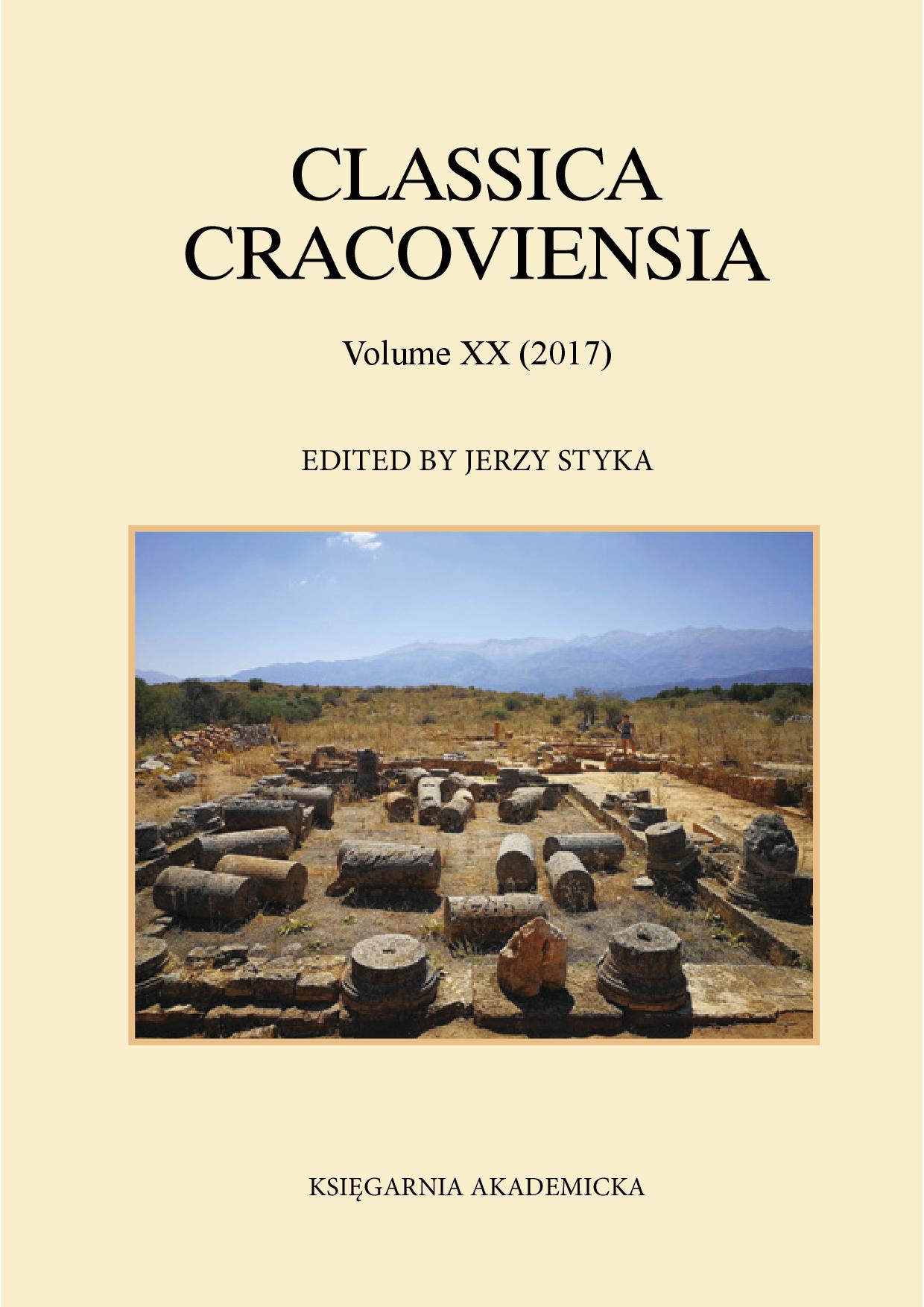Consonant Alliteration in Lucan's "Pharsalia", Books I–V
Consonant Alliteration in Lucan's "Pharsalia", Books I–V
Author(s): Stanisław ŚnieżewskiSubject(s): History, Ancient World
Published by: KSIĘGARNIA AKADEMICKA Sp. z o.o.
Keywords: alliteration T D M N; clustrers; Julius Ceasar; passions; civil war
Summary/Abstract: In book I M, N alliteration amounts to 24,8%; T, D – 16,5%; S – 10,5%, R – 6,7%. In book II the first place belongs to M, N alliteration – 22,8%; then: T, D – 16,1%; S – 11,8%; M, N, T, D – 5,9%. In book III the predominant alliteration is M, N – 19,8%; then: T, D – 15,09%; S – 12,5%; M, N, T, D (TH) – 5,6%. Book IV is atypical, as the number of M, N and T, D alliterations is identical, i. e. 19,1%. S constitutes 11,7%, while M, N, T, D – 6,9%. In Book V the most frequent alliteration is M, N – 20,0%, next we have T, D – 19,3%; S – 9,2%; M, N, T, D – 8,2%. Alliteration in books I–V of Lucan`s Pharsalia is mainly used to describe the character and actions of Julius Caesar. The narrator insists on his great energy, his ability to cope with critical situations, his extreme luck and Fortune’s favour during the struggle with the elements. Civil war brings about enormous chaos in the universe. The personified Roma is responsible herself for all the calamities that befall her. Yet alliteration is also used to describe more placid scenes, for example the scenery, such as cities (Iolcos, Brundisium) and rivers (Euphrates, Tigris). Sometimes alliteration emphasises certain religious elements, e.g. the sacred grove near Massilia. Alliteration is sporadically used in the account of the exploits of Pompey, Cato and Crassus. It plays an important role in the frequent descriptions of the elements that bring disaster on the army, in particular floods and droughts.
Journal: Classica Cracoviensia
- Issue Year: 2017
- Issue No: 20
- Page Range: 191-212
- Page Count: 22
- Language: English

